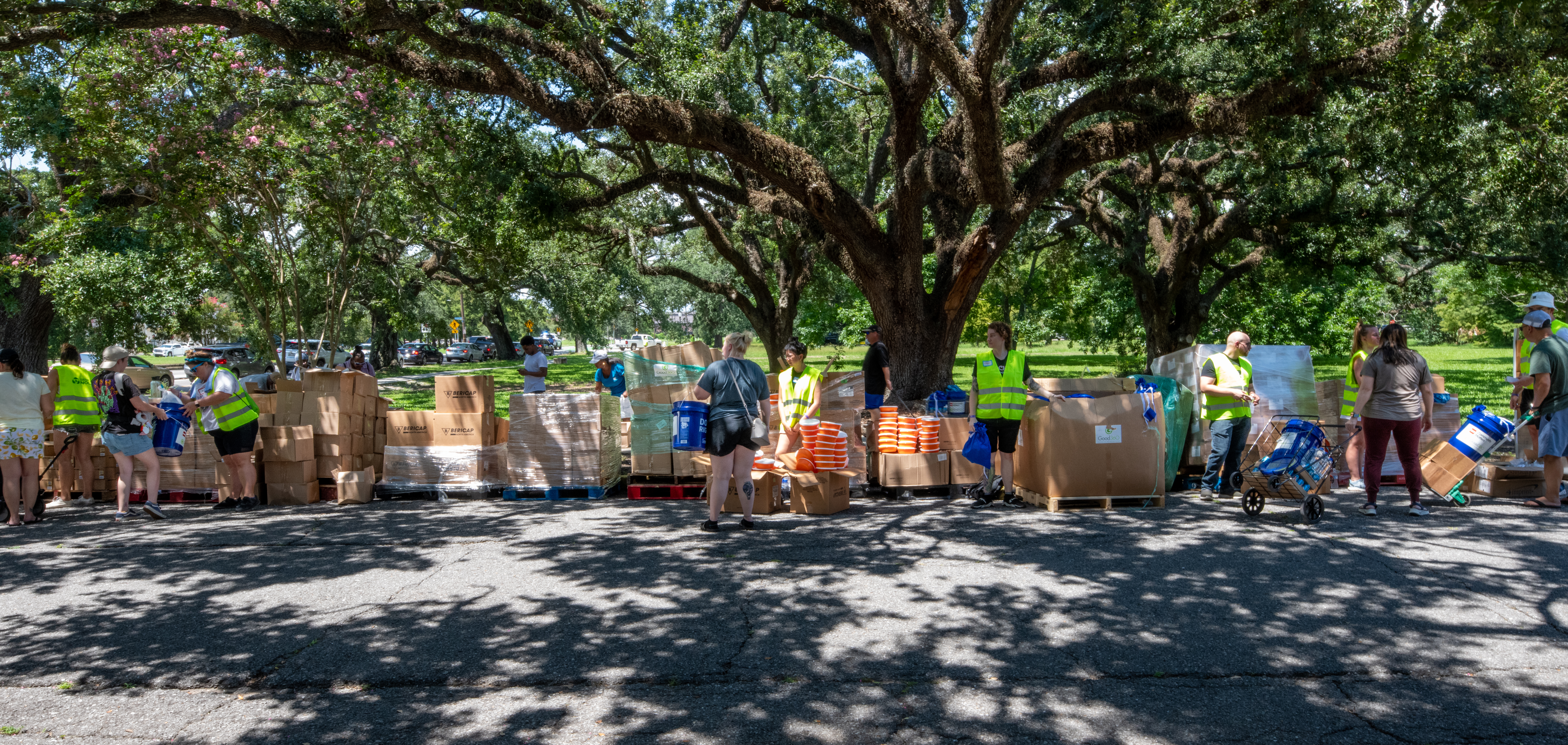Disaster preparedness: Individuals, organizations and communities benefit from planning ahead

National Preparedness Month, observed each September, is a time to focus on creating a plan to stay safe during a disaster. This year’s theme is “Start a Conversation.”
Let’s start the conversation so we’re all prepared in the face of changing climate, intensifying and increasing storms, and other things that might impact our safety.
Being prepared for whatever hazard might come your way can significantly affect your ability to cope and recover. That’s why we support preparedness efforts and want to highlight the need for them during this important month of observance.
Individual preparedness
As individuals, we must all consider ways to prepare ourselves for the hazards most likely to impact us, our families and our communities. How can we take responsibility for our own preparedness?
- Develop a disaster plan: Create a family emergency plan that includes evacuation routes, contact information for loved ones and a designated meeting place.
- Build a disaster supply kit: Assemble a kit containing essentials like food, water, first aid supplies, charging cords, a flashlight and a battery-powered radio. And, once you know a hazard is approaching, grab important documents, medications and communications tools to ensure you’re ready for what’s next.
- Learn basic survival skills: Take a CPR and first aid course or learn basic survival techniques, like building a fire or purifying water. Have a plan for long-term power outages that will impact food and water access, heating and cooling.
- Stay informed: Sign up for emergency alerts from your local government and monitor weather forecasts.
Organizational preparedness
- Conduct risk assessments: Identify potential hazards, like weather events or industrial accidents, that would be most likely to affect your business and develop strategies to mitigate them. Often, your local emergency management office can help you get started here.
- Create emergency response plans: Outline procedures for responding to various types of emergencies. A continuity of operations plan (COOP) is a must-have for every organization. Tech Soup and CDP partnered to create “The Resilient Organization” – a holistic IT planning and recovery guide.
- Have an employee assistance plan: Make a plan for how you will assist your employees when they experience personal losses from a disaster.
- Train employees: Provide employees with training on emergency procedures and safety protocols.
- Maintain emergency supplies: Stock your workplace with essential supplies, including first aid kits, emergency lighting and a generator.
Community preparedness
- Participate in local emergency planning: Get involved in your community’s emergency planning efforts. If your community isn’t planning for an emergency, advocate for those efforts to start.
- Support local organizations: Donate to local organizations that provide disaster relief and preparedness services. Local organizations understand the unique needs of your community and how best to support the people they serve.
- Volunteer: Offer your time and skills to help your community prepare for and recover from disasters. Please ensure your skills are needed and deploy through a credible organization leading those efforts. Do not ever self-deploy. Joining a CERT team in your area can be a great place to start.
- Spread awareness: Educate others about the importance of disaster preparedness and share information with your community.
What’s philanthropy’s role?
At CDP, our focus is always on mobilizing philanthropy to help communities withstand and recover from disasters. What are some examples of how we have supported preparedness in the U.S. and its territories, and what would we encourage other funders to do?
- Provide funding for communities you serve to plan and prepare for the events most likely to affect them. Following Hurricane Harvey, CDP joined forces with another local funder to provide more than $1.5 million in preparedness grants to municipalities, school districts, nonprofit organizations and faith-based organizations throughout the Texas Gulf Coast to invest in their preparedness efforts for future hazards.
- Support local organizations that provide disaster preparedness kits or other preparedness and planning materials for those in the community who might not otherwise have the resources to prepare and plan. In July 2022, we funded Culture Aid NOLA’s July Supply event, a collaboration among many local and national partners to better prepare those in the path of a potential hazard.
- Invest in the preparedness and emergency planning efforts of local social services organizations that are likely to be called upon to respond following the impact of a hazard on the community. Last year, we partnered with Fundación de Mujeres en Puerto Rico to provide emergency resources and planning for several local, women-led and women-serving organizations in some of Puerto Rico’s most marginalized communities. We recently learned that, thanks to this investment, these organizations were quickly up and running and ready to respond to community needs following Hurricane Ernesto, which struck the island in August.
- Support legal services, which are often vital for households after a disaster. We’ve partnered with Oklahoma Indian Legal Services to provide outreach events highlighting the need to prepare for legal concerns before a disaster, including end-of-life details and clear housing title transfers.
- Consider how you can embed preparedness into recovery services work. Most disaster case management programs and long-term recovery groups will consider preparedness at some point in their recovery journey. Intentionally supporting and funding them to include this work is critical. For example, the Midwest Early Recovery Fund included preparedness activities in recovery services grants for the Arkansas Coalition of Marshallese after tornadoes in the Bentonville area of Arkansas in 2022 and 2024.
- Connect with other funders supporting preparedness. CDP works with The Funders Network to support the Philanthropic Preparedness, Resiliency and Emergency Partnership (PPREP), a program focused on building philanthropic preparedness. Working with and through community foundations in a community leadership model, these place-based grantmakers are developing relationships across their communities’ disaster preparedness and response spectrum and helping to weave together networks positioned to act along the disaster continuum. One PPREP member, the Iowa Council on Foundations, created a philanthropy toolkit based on their learnings from the cohort. You can use this toolkit or connect with one of these community foundations to learn how they are better preparing themselves and their communities and networks for disaster.
Remember: Preparedness is an ongoing process. Regularly review and update your plans to ensure they remain effective. By taking proactive steps to prepare for disasters, you can increase your chances of staying safe and ready to assist yourself and your neighbors in the face of adversity.

